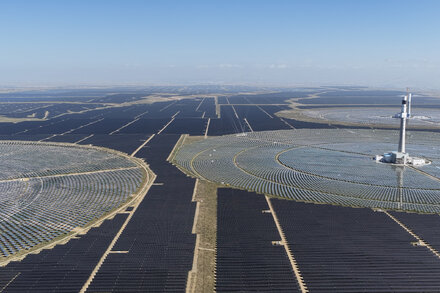
In a monumental stride towards its renewable energy objectives, China has completed the construction of an expansive solar power installation spanning 162 square miles across the Tibetan Plateau. This ambitious project, situated on what is often referred to as the “Roof of the World,” represents a significant escalation in the nation’s efforts to harness clean energy and address its substantial energy demands.
The decision to site such a vast energy farm on the Tibetan Plateau is underpinned by a confluence of strategic and environmental factors. The region, known for its extreme altitude and sparse population, offers unparalleled conditions for solar energy generation. Its thin atmosphere allows for greater direct solar radiation, while its high elevation minimizes atmospheric interference, leading to an intensity of sunlight rarely found elsewhere.
“The Tibetan Plateau provides an optimal canvas for large-scale solar development,” stated Dr. Li Wei, a senior energy policy analyst at the Chinese Academy of Social Sciences, in an interview. “The sheer amount of direct sunlight, combined with the often-cold ambient temperatures that enhance panel efficiency, makes it a uniquely valuable resource for our national energy strategy. This project is not just about scale; it’s about leveraging nature’s advantages with cutting-edge engineering.”
China, the world’s largest energy consumer and a leading investor in renewable technologies, has set ambitious targets for carbon neutrality by 2060. Projects of this magnitude are crucial components of this national strategy, aiming to reduce reliance on fossil fuels and mitigate environmental impact. The 162-square-mile array is expected to feed a substantial amount of clean electricity into China’s national grid, supporting industrial and residential consumption across various provinces.
Strategic Imperatives and Environmental Considerations
The development also addresses China’s long-term energy security. By diversifying its energy mix with vast domestic renewable sources, the nation aims to buffer itself against geopolitical volatilities and fluctuating global energy markets. The plateau’s remote nature, while presenting logistical challenges during construction, also offers vast tracts of land with minimal human displacement, a critical factor for projects of this scale.
While the environmental benefits of solar energy are clear, the development on the Tibetan Plateau also prompts careful consideration of its ecological impact. The plateau is a unique and fragile ecosystem, home to diverse flora and fauna. Project developers and government agencies have emphasized the implementation of measures to minimize disturbance, including environmental impact assessments and ongoing monitoring of the local ecology.
“Balancing our urgent energy needs with the preservation of such a vital natural environment is paramount,” a spokesperson for the National Energy Administration commented recently. “This project incorporated advanced design and construction techniques aimed at minimizing footprint and ensuring long-term ecological stability while delivering clean power for millions.”
The construction involved significant infrastructural development, including high-voltage transmission lines to connect the remote solar farm to major consumption centers. This network not only facilitates the distribution of the newly generated power but also strengthens the overall resilience and interconnectivity of China’s national grid.
The vast solar installation on the Tibetan Plateau underscores China’s unwavering commitment to establishing itself as a global leader in renewable energy and its determination to meet future energy demands through sustainable means. It stands as a testament to engineering ambition and strategic environmental planning on an unprecedented scale.
Source: Read the original article here.





